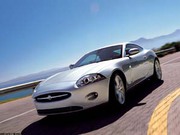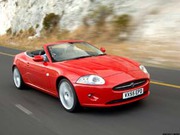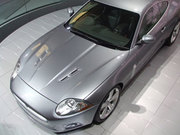X150 (2006 - 2014)
If you own a X150 XK or XK-R and would like to add your car to our historical register then please contact:
X150 Register Coordinator
Paul Graham
Email: X150register@xkec.co.uk
When the XK first appeared to the world back in 1996 it created a whole new era for the history of Jaguars sports cars. With 91,406 XK's finally rolling off the Browns Lane assembly Line it went without saying that it had been a phenomenal success. In 2006 a whole new generation of XKs was unveiled under the leadership of Jaguar Design Director Ian Callum. At the unveiling speech at the Frankfurt Motor Show back in September 2005, Bibiana Boerio, Managing Director Jaguar Cars said "this is a sports car with the heart and soul of every great Jaguar." Ian Callum followed by saying “It’s just like a Jaguar should be – powerful and exciting”.
Well, what was new on the XK (project X150)? Did it indeed live up to all the hype? How did it compare to the current version? Well, inside the new XK the interior had been totally redesigned. Fine luxurious stitched leather continued (as you would expect) but some more high-tech trim surfaces had also been introduced. The XK’s stance was now longer, wider and taller across its two-door Coupe and Convertible forms.
The main design change had been the introduction of the allaluminium monocoque body which was previously introduced on the XJ. The 4.2 litre V8 still thrusted out a maximum speed limit of 155mph (shame) but with a 0-60mph time of 5.9 seconds. Jaguar stated that the quarter-mile time could be reached in 14.4 seconds, less than half a second off the pace of the previous supercharged 4.2 XKR. The familiar ‘J’ gate had been replaced with a new Sequential Shift system allowing the driver to use steering wheel-mounted paddles to change gear (F1 style). The car sat on 18-inch alloy wheels as standard, with the option of 19 or 20-inch wheels available. Other luxuries included a high and optional premium-quality audio system and built in Bluetooth based communication. There were initially three veneer options – Aluminium, Burr Walnut, and the more modern wood.
The aluminium option offered a high-tech appearance. Jaguar had also introduced a new feature called the “Pedestrian deployable bonnet”. An imaginative design that aimed to lessen the severity of injuries to pedestrians in the event of a collision with a car. The idea being that in the unfortunate event of a pedestrian impact, the deployable bonnet automatically ‘popped’ up a few inches, to increase space between the engine and the bonnet. This helped to isolate the pedestrian from hard points in the engine compartment.
Various other facelifts were produced over the following years with the last model being discontinued in 2014.










